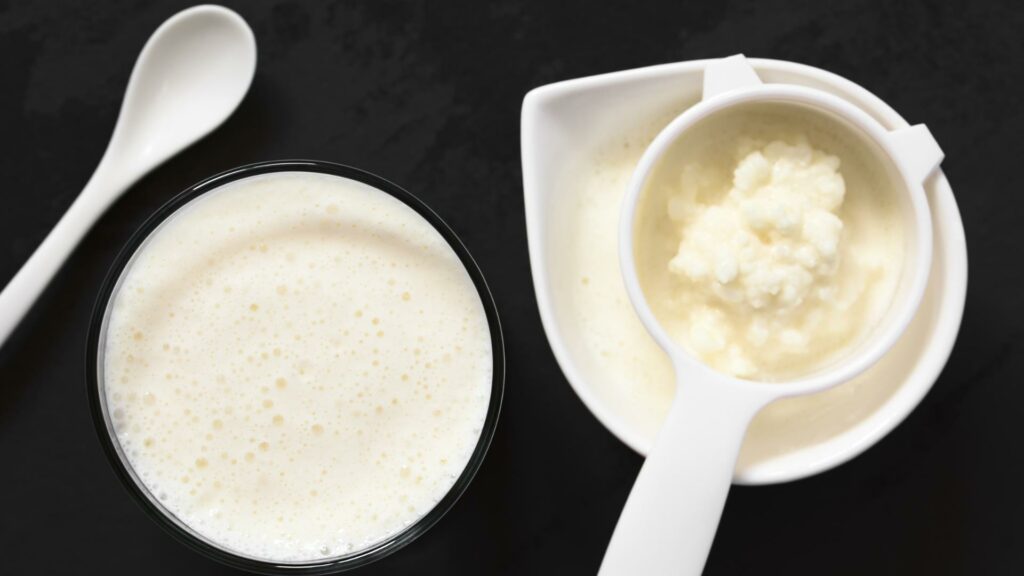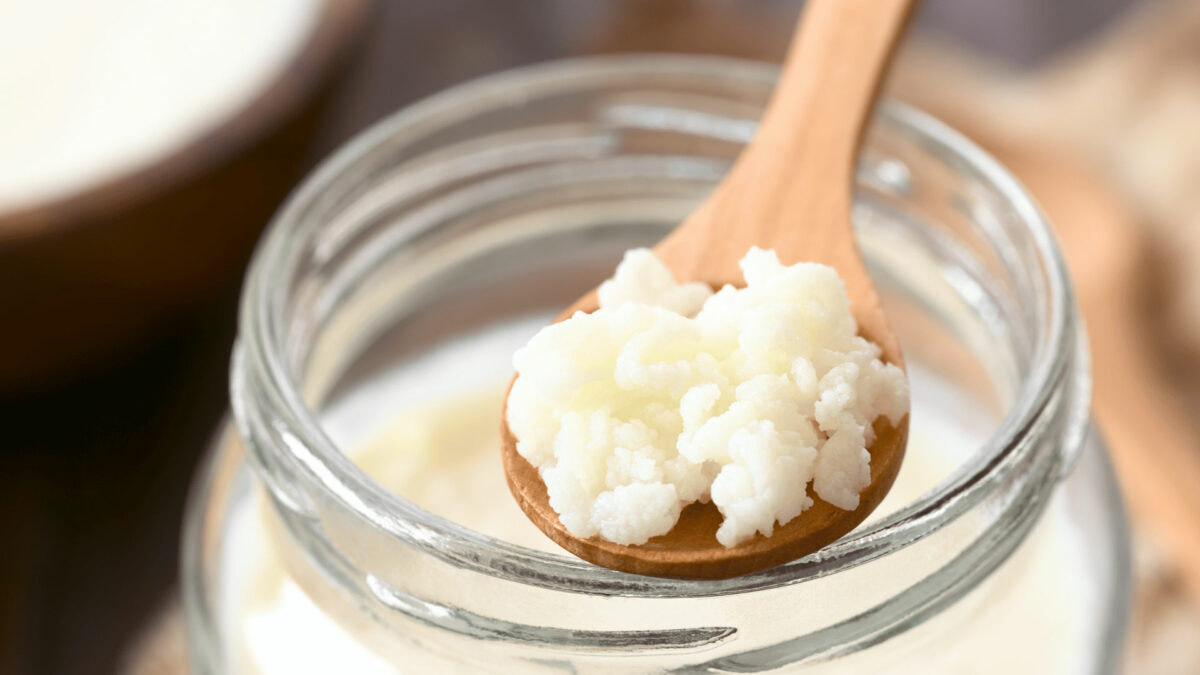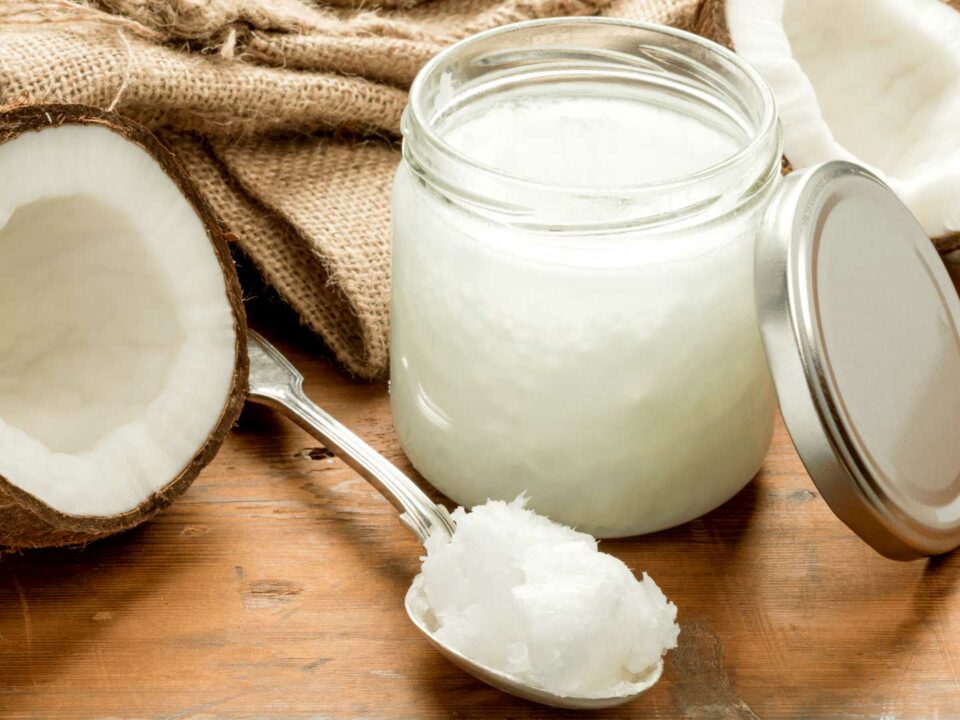If you have not been able to develop a routine to feed your milk kefir grains due to travel or other circumstances and they have been in the fridge for a month or more, do not worry. They may be sad, but they are not dead.
We’re going to bring them back by taking them out of the fridge and giving them several new batches of milk. That is, feeding our water kefir grains outside the fridge, at room temperature, with the best whole milk that we have access to. It may take several times to get them to return to fermenting like before.
We will see how to revive our milk kefir grains and enjoy delicious and probiotic milk kefir again.
Did You Know?
If you are entering the world of fermentation, and especially to prepare kefir, it is important that you know the following ways of referring to the microorganisms we use for fermentation to save yourself headaches when you hear these ways of calling the that and know that they refer to the same thing.
Milk kefir grains are also called:
- Milk kefir
- Kefir grains
- Milk Kefir granules
How to Ferment Milk Kefir Grains Again
Let’s suppose that the milk kefir grains were in a glass jar with whole milk stored in the fridge for several months, and now you want to take them out to ferment again.

In order to restore the strength and health of our milk kefir grains, we need to do the following:
1. Get whole milk
The first thing you should do is get whole milk. With whole milk, we are talking about milk with lactose, preferably unpasteurized. Lactose is the main food for our milk kefir grains.
We must think from the perspective of the milk kefir grains. Ideally, use milk at room temperature. If it is cold, the fermentation conditions change, making it slower, and the cold of the milk will not help the recovery.
2. Take the milk kefir grains out of the fridge and strain them
Take the milk kefir grains out of the fridge and pass them through a strainer (preferably plastic). You should not consume the remaining kefir. You can put it in the garden since the microorganisms it contains will help the plants by acting as a natural fertilizer.
Depending on the number of milk kefir grains, use one or several clean and sanitized glass jars and, using a wooden spoon, place the strained milk kefir grains inside.
Notes:
- Use only glass containers, and as much as possible, avoid metal utensils.
- You must make sure that your glass jars are cleaned and sanitized. To do that, just put some boiling water and vinegar in to sterilize them and then dry them off.
3. Feed the milk kefir grains with whole milk
The ideal ratio is ½ to 1 tablespoon of milk kefir grains per liter of whole milk. According to expert David Asher, the milk kefir grains should make up 2% of the mixture, i.e., maximum of 1 tablespoon of milk kefir grains in every liter of fresh milk you want to ferment into milk kefir. This, as we said, is the ideal ratio, but you can play around with the amounts to suit your needs and tastes.
4. Ferment at room temperature
Cover with a tea towel or kitchen cloth and secure with rubber bands or ties.
Let them ferment at room temperature, taking care that they receive light but are not directly in the sun. Let them rest until the next day.
It is important to note that our milk kefir grains are going to be resilient, as they have been without fresh milk for a while and at a temperature that is not their preference.
The next day, you will see that the mixture is a little fermented. It is expected to be slow at first, as the grains have been in a type of “hibernation.” It is normal for them to take time to start fermenting as they did before.
5. Repeat the process of feeding the milk kefir grains
Notes:
- If we use the glass jars that the milk kefir grains have been fermenting in for the second feeding, these microorganisms will help start the fermentation process all over again. The process is known as “backslopping.”
- It’s ok for the kefir to separate a bit at the bottom of the jar. This means we’re on the right track to get our milk kefir grains back. That is to say, with a little separation at the bottom of the jar, we are reaching the peak of activity.
- But if there is more separation in the kefir throughout the jar, it is a sign that the fermentation is not as good, and we don’t want that. Though, it should not surprise us because the milk kefir grains were in the fridge, and we are in the process of recovering their microbiology.
Keep in mind that fermentation is a science but it is also an art. There are many factors that alter fermentation: type of milk, temperature of milk, weather, number of milk kefir grains, health of the milk kefir grains, etc., so the recovery process may be different depending on your conditions. We may need to repeat the feeding process for our milk kefir grains 2-4 times for them to recover well.
All fermented foods have bell curves, and the milk kefir is no exception.
- At 12 hours: if it is liquid, leave for another 12 hours.
- At 24 hours: it should be acidic and thick.
You must watch and be aware that this process is a bit different from regular fermentation because we are getting our milk kefir grains back.
The kefir should have a thick texture and an acidic flavor. If you feel it is good, you can strain it and store it in glass jars and put them in the fridge to eat it in the coming days, weeks or even months.
How Long Do Fermented Foods Last in the Fridge

Refrigeration is a technology that allows us to preserve food (we all understand that). That is, it is better preserved in the fridge than at room temperature. Ferments in the fridge have two layers of protection, one is the temperature and the other is the fact that they are already fermented.
But, how long can we keep milk kefir and other ferments well preserved in the fridge?
We must consider that even inside the fridge, the process of fermentation continues, but it is much slower. Thanks to the cold temperature, it slows down.
With each ferment we do, there is a peak of activity, then the microbial activity goes down, so it is good to store fermented foods when they are starting to drop from their peak of activity, as when they reach that peak, they also reach their higher acidity level.
Milk kefir stored in the fridge should be eaten within a month, since we now know that fermentation keeps going, even though it happens more slowly.
If two or three months go by, the kefir will taste more acidic or maybe more sour. So, since its flavors will change, it’s best to eat it within a month or two at the most.
This does not mean that you cannot try some kefir that has been in your fridge a little longer. You can trust your eyes, your nose, your palate, and your gut.



